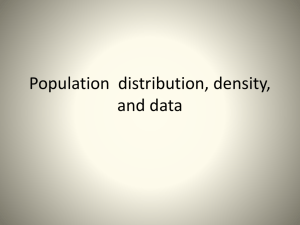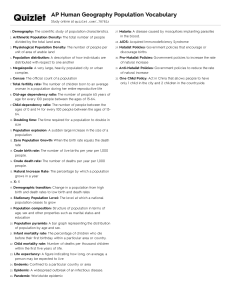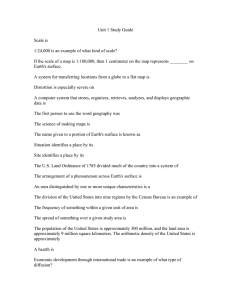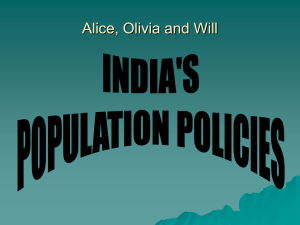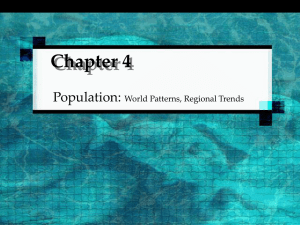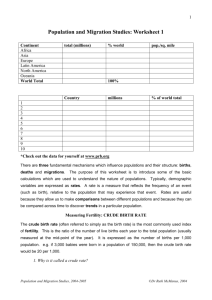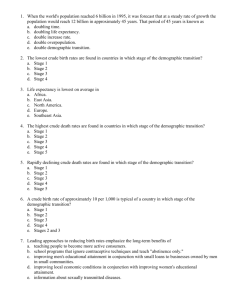Chapter 2: Population
advertisement
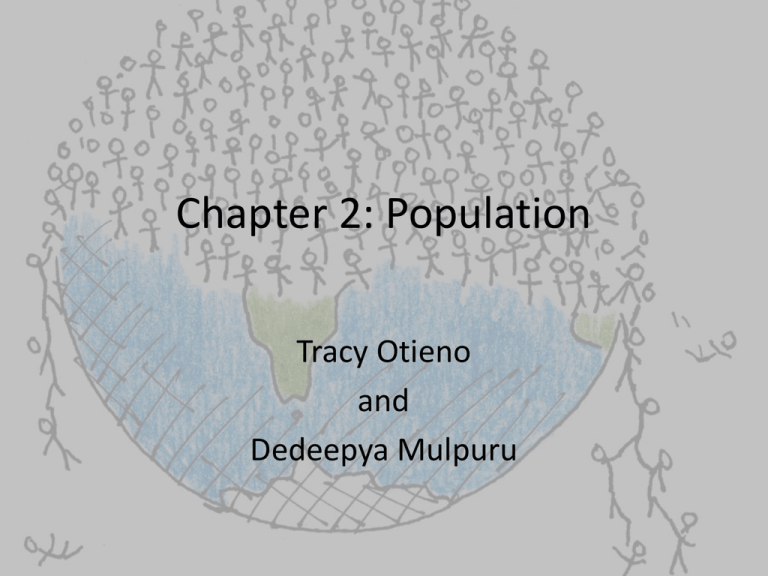
Chapter 2: Population Tracy Otieno and Dedeepya Mulpuru What is Population? • Population – The number of people in a given region – Counted by a census which is counted every 10 years in most countries • Census – The counting the population in a region. – Gathers information including gender, race, age, income..etc. • Demography – The study of characteristics of human population • Population Density – Number of people occupying an area of land U.S and World Population Clock Measuring population • 2/3rds of the world population is concentrated in four specific areas: – East Asia, Southwest Asia, South Asia and Europe • Ecumene – Portion of Earth’s surface occupied by permanent human settlement • Crude density – Number of people in a given area • Population Density – Total number of people divided by total land area • Agricultural density – Number of farmers per arable land • Physiological density – Number of people per arable land Population Change • Total Fertility Rate – Average number of children a woman will have during childbearing years • Infant Mortality Rate – Number of infants under age 1 compared with total live births • Life Expectancy – Average number of years expected to live • Crude Birth Rate – Number of births per 1,000 people • Crude Death Rate – Number of deaths per 1,000 people • Doubling time – Amount of time it takes the population to double of a given region • Natural Rate of Increase – Percentage of population growth in a year – Equation: (CBR-CDR)/10 Population Pyramid • A bar graph that displays age and gender of a population. – The shape is determined by the CBR – Influenced by % of population in each age group and distribution of males and females • Sex ratio – Number of males per 100 females • Dependency ratio – Number of people to young or too old compared to those who work Why does population increase at different rates in different places? • Based on the demographic transition model, it explains population change as a country develops from a pre-Industrial to an industrialized economic system. Stage 1: Stage 2: Stage 3: Low growth High Growth Moderate Growth Stage 4: Low Growth Epidemiologic Transition Model • Focuses on the distinctive causes of death in each stage of the demographic transition: – Stage 1: Pestilence and famine • Black Plague – Stage 2: Receding Plague • Affects high percent of population and is wide spread • cholera – Stage 3: Degenerative and human-created diseases • Decline of infectious diseases and is associated with aging • cancer – Stage 4: Delayed degenerative diseases – (Stage 5: Reemergence of infectious diseases and parasitic diseases) • Evolved diseases, new strains. • Malaria Malthus Theory • Wrote an essay Principle of Population of 1798 which stated that the population would growing too fast for the food supply. – Critic: • Failed to considered population growth in poor countries which would result with a wider resource gap. Helpful Links • http://quizlet.com/17803728/populationgeography-review-flash-cards/ • http://www.superteachertools.com/jeopardyx /jeopardy-reviewgame.php?gamefile=1304099801
